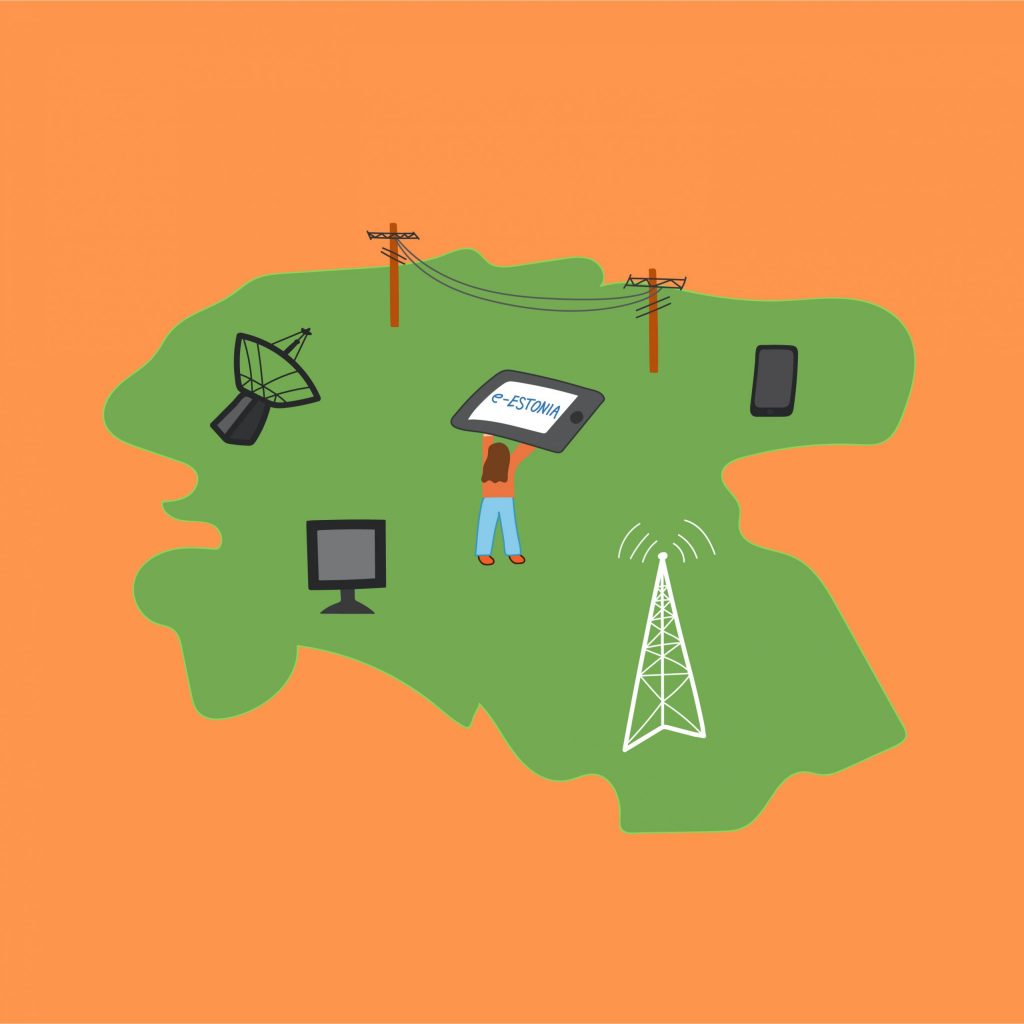
Sophia Abolfathi explains how a small Baltic state’s push to digitally reform at the turn of the 21st century shows how we can rework the way we think about modern democracy.
By Sophia Abolfathi Credit: The Myriad News
In our uniquely digital age, the opportunity to completely redefine the way we govern and organize society is attainable to any who are innovative enough to seize it.
Estonia, a small Baltic state of just 1.3 million people, embraced this opportunity in 1991 when they were forced to rebuild the nation from the scraps of Soviet occupation.
To the progressive Estonian leaders, a fully functional digital society was the nation’s ticket to economic rejuvenation. Thirty years later, Estonia ranks high amongst the world’s best digital nations.
Designing a digital society
Estonia’s first steps towards digitizing the nation came with the 1996 Tiger Leap Initiative, an ambitious project to update IT infrastructure nationwide and bring computer and coding classes into every primary school. This effort returned tremendous results – today, the country proudly boasts a 90 percent internet usage rate compared to the 53 percent global rate. In 2000, the government was among the world’s first to declare internet access a basic human right.
Estonian President Kersti Kaljulaid spoke about the goal of e-Estonia in a 2018 interview with CNBC.
“We simply are developing our service offer to our people,” Kaljulaid said. “It was simply cheaper, easier (to do it digital) and people found it convenient.”
Currently, 99 percent of Estonia’s public services are online. This includes banking, taxes, cabinet meetings, parking fees, medical appointments and voting.
Estonian access to the digital government is made possible by each citizen’s individual e-identity. 98 percent of Estonians have a state-issued digital ID that they can use for digital signatures and proof of identification.
Estonia fights for stronger cybersecurity
In 2007, Estonia faced a wave of grueling cyberattacks that were later traced back to Russian IP addresses. Online banking, media outlets and government websites were all rendered inaccessible by overwhelming levels of traffic. Internet servers were swamped for nearly three weeks in what is considered the first large-scale cyberattack of its time.
Ground-up cybersecurity reforms were underway for several years following the attacks. Estonia’s Cyber Defense Unit was formed by the nation’s leading IT experts and volunteers. A series of KSI blockchain technology was developed to protect national data systems.
In 2018 the country created the world’s first foreign data embassy. All of Estonia’s vital data and critical databases are stored in a high-security data center in Luxembourg. The nation is the first in the world to be considered totally “in the cloud”.
Today, both the NATO Cooperative Cyber Defence Center of Excellence and the European Union IT Agency are located in the Estonian capital, Tallinn. In the same interview with CNBC, President Kaljulaid spoke on the country’s concern about another cyberattack.
“We [Estonians] worry less than others actually, because we have a high level of digitalization and we started to protect ourselves when you know digital was still young,” Kaljulaid said. “Our people have a high level of cyber-hygiene.”
Expanding the nation’s borders
In the 2020 UN E-Government survey, Estonia ranked third (following Denmark and Korea, respectively) as the world’s most developed digital infrastructures. However, this infrastructure is not exclusive to Estonia’s own physical borders.
In 2014, Estonia launched its e-residency project—an entirely digital nation that’s open for global citizens to join and have their own digital identity. To date, the country is home to 62,000 e-residents. Most of those that apply for an e-residency plan to break into Estonia’s lucrative tech market.
Estonia boasts impressive world rankings when it comes to the technology industry: No.1 in start-up friendliness, No.2 in internet freedom and No.1 in entrepreneurial activity. Estonia’s advanced digital society and exclusive memberships in the European Union, North Atlantic Treaty Organization (NATO) and Organization for Economic Cooperation and Development (OECD) are attractive offers for aspiring entrepreneurs across the globe.
Europe’s Silicon Valley currently houses 10,000+ e-resident companies, 1,000+ ICT startups, and four start-up companies valued at over 1 billion dollars (including world-favorite communication software Skype).
e-Estonia redefines modern democracy
When COVID-19 reached Estonia in early March, the country did what it knows best: implemented digital solutions to solve problems. From launching a COVID-19 info chatbot on government sites to creating a platform that matched volunteers with those who needed assistance, digital support was a crucial part of the government’s pandemic response.
e-Estonia is an intentional effort to forgo the bureaucratic red tape that plagues many “democratic” countries. Rebuilding the nation with the needs of the citizen at the forefront is daring, but guaranteeing each citizen’s digital freedom is almost radical.
The nation ensures it can open lines of communication with its citizens and trust them with their own independence in navigating the public sector. By making the government accessible to those it serves, Estonia has created a nation that can transcend even its own borders.
e-Estonia’s success is a testament to utilizing technological resources in order to create a more equitable global society. We must not underestimate the presence of world nations who have committed to progressing towards a safer and more inclusive future.
